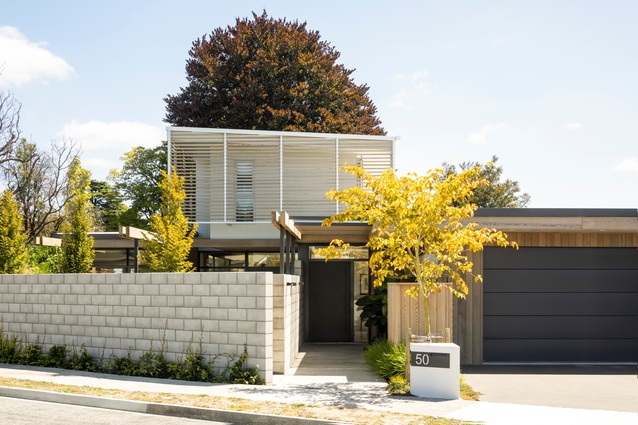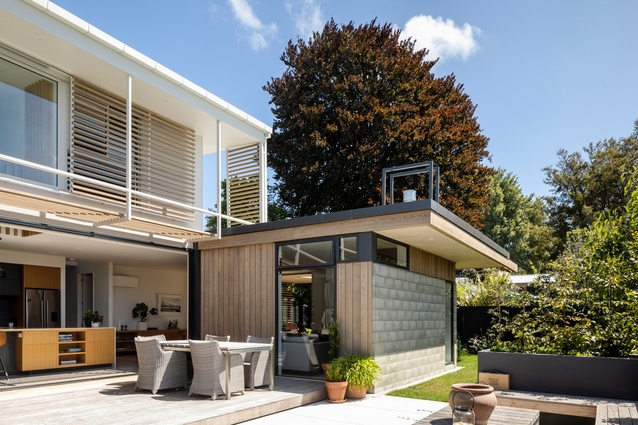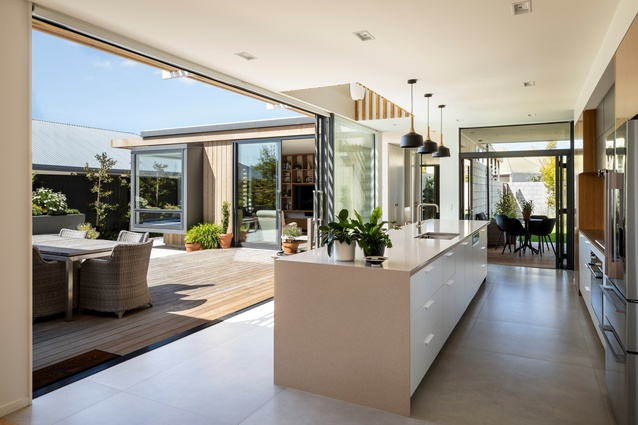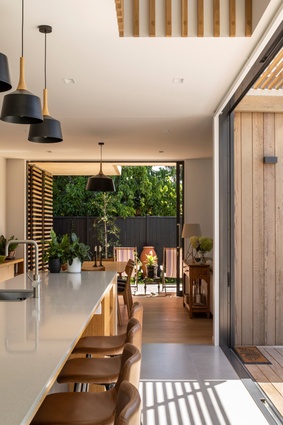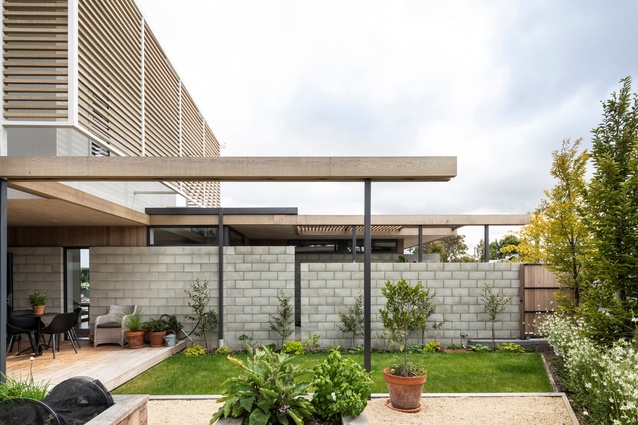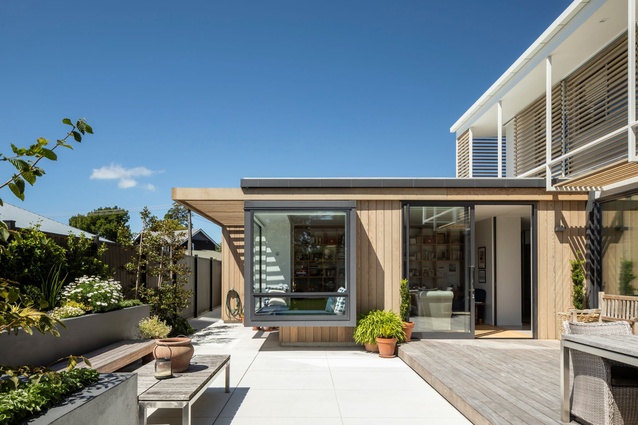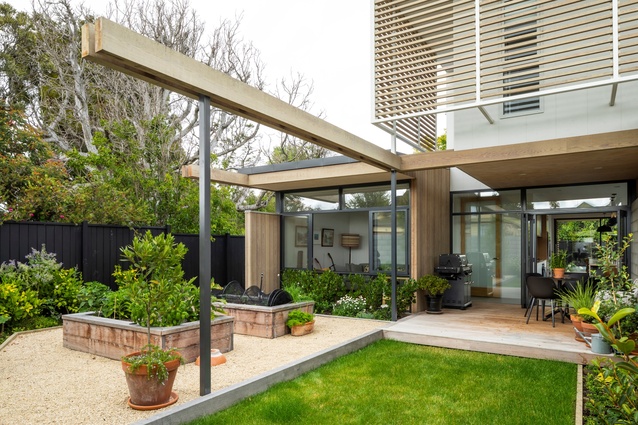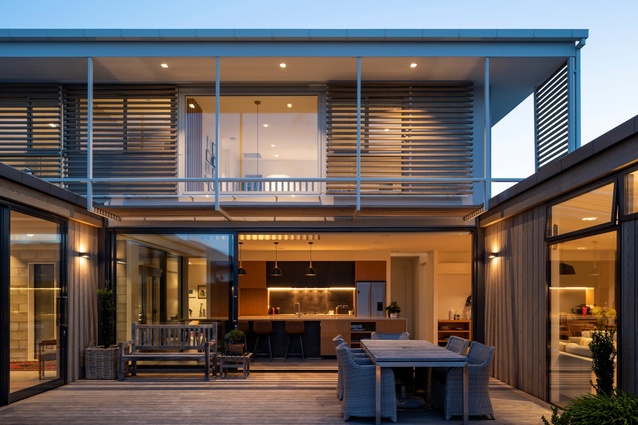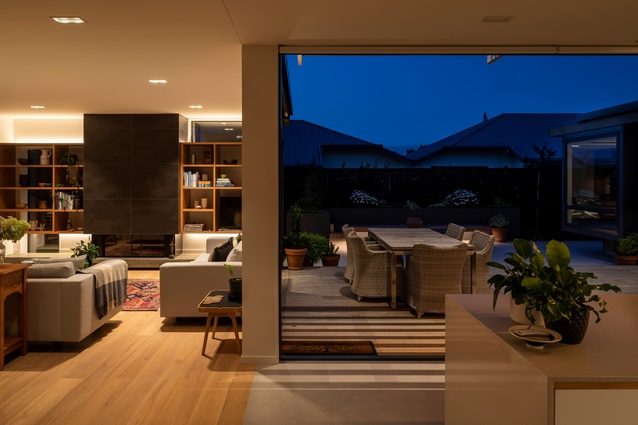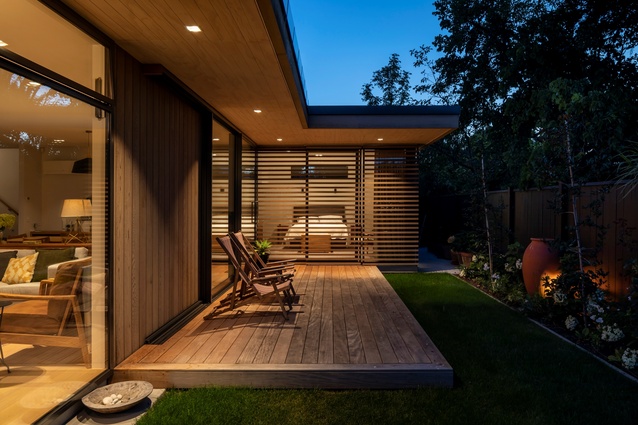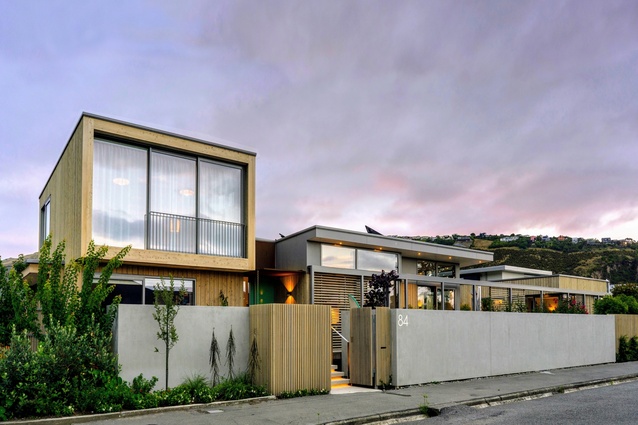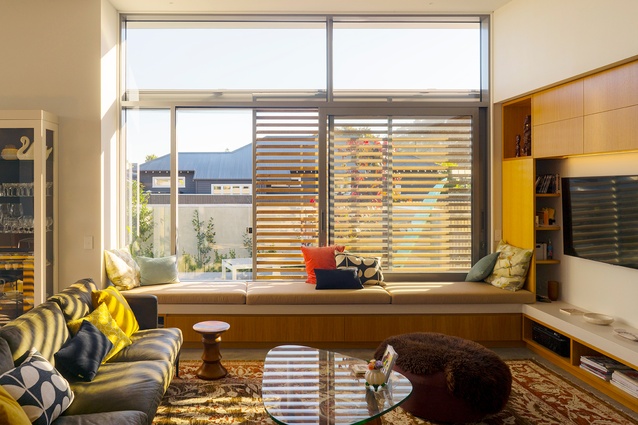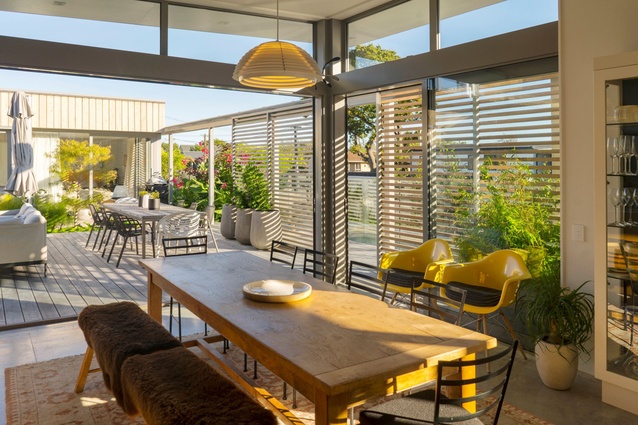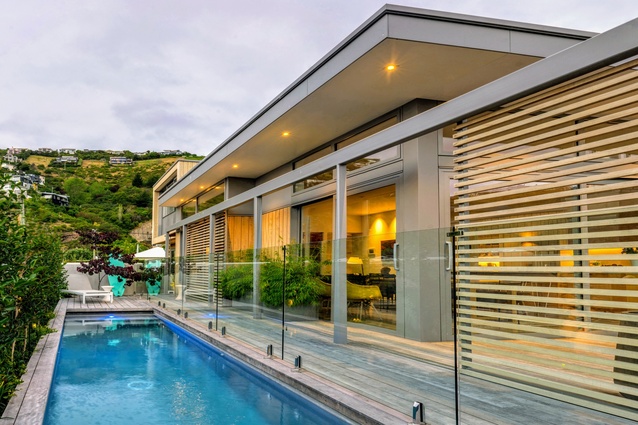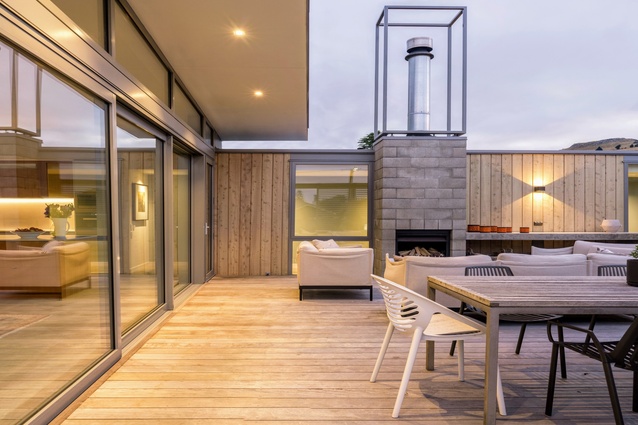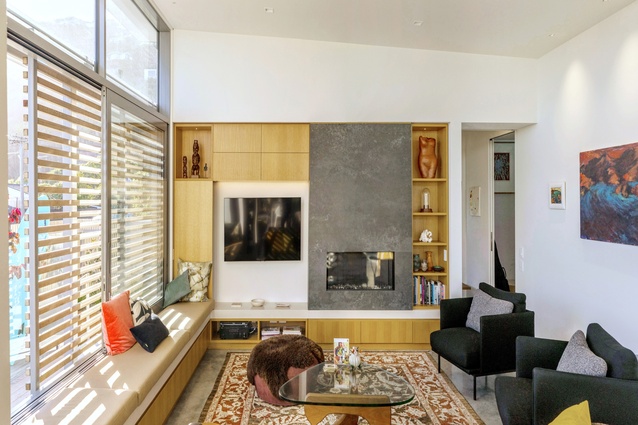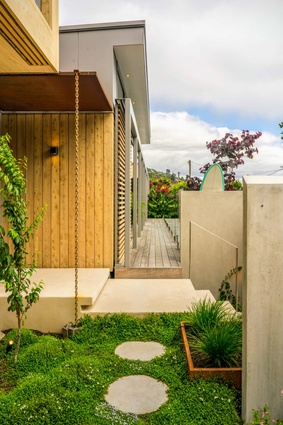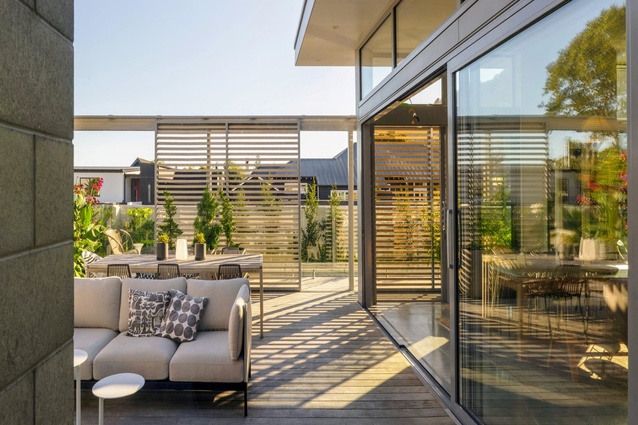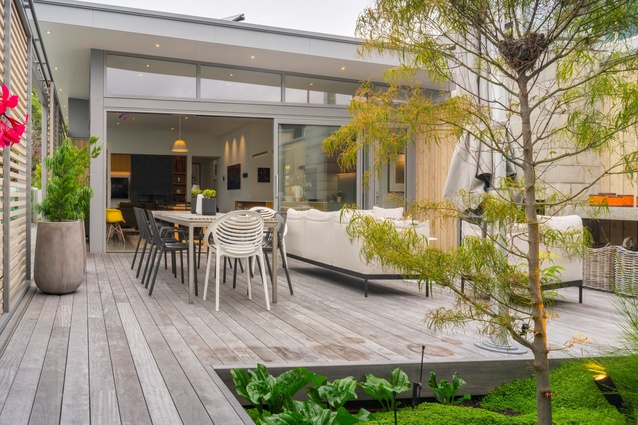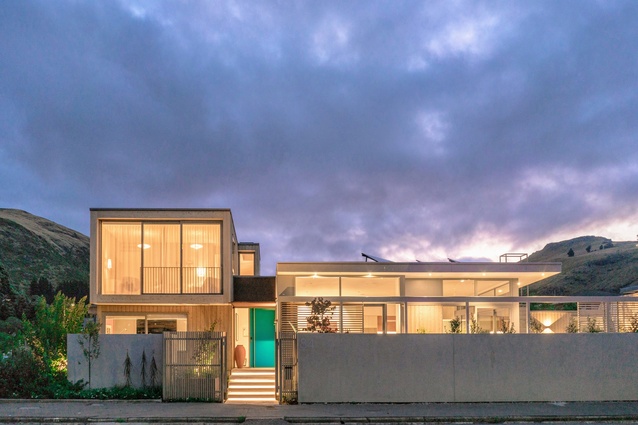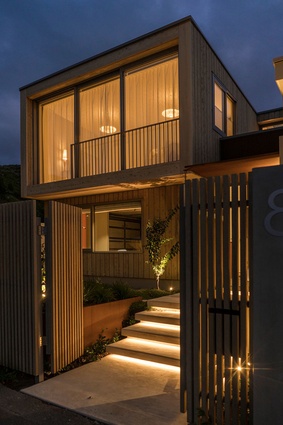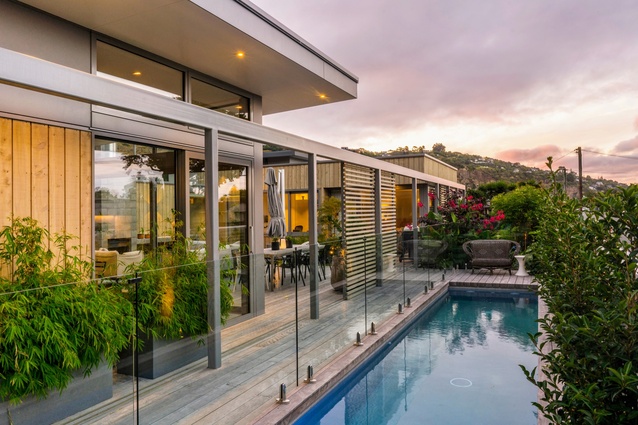Pivot House and Four Winds: Designing sustainability
Borrmeister Architects, led by architect Wulf Borrmeister, place a high emphasis on environmental awareness both inside, and outside their Christchurch-based studio. Below, we look at two of their recent homes: Pivot House in Blenheim, and Four Wings in Christchurch, to find out how they have achieved environmentally-friendly outcomes for their clients that also improve their quality of living.
Pivot House
Pivot House was designed for a couple who were looking to scale down from their previous large vineyard home, and transition to urban living on a smaller inner city section.
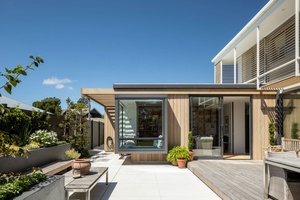
The client’s brief called for a comfortable, timeless, environmentally friendly design that would capture the sun across the seasons and maintain a strong connection to outdoor spaces and the garden. Additionally, the design was to consciously fit in with surrounding neighbours in the context of the broader Blenheim neighbourhood.
To achieve this, a near flat-roofed, contemporary, carefully considered ‘broken up’ 280sqm dwelling was created, featuring a simple palette of natural, low-maintenance materials — cedar weatherboards and concrete block walls — which were integrated with extensive outdoor living spaces.
The layout of the dwelling avoids unnecessary circulation areas and wasted space despite its ‘broken-up’ nature. Its multiple courtyards on three sides support natural cross-ventilation, solar gain and protection from the prevailing winds. In addition to this, a void from the kitchen on the ground floor to the first level encourages natural stack-type ventilation of the house.
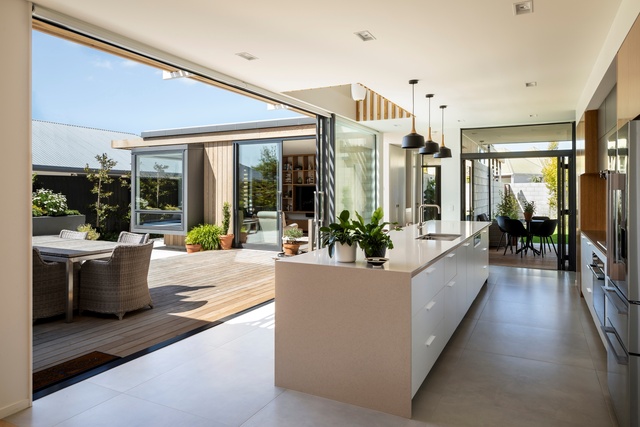
To create a relaxed mood, outdoor living was paramount to the design. Despite the very tight inner city site, the house has been designed to seamlessly interconnect with its surroundings with the kitchen as the ‘heart’ of the home and the pivot point for three courtyards.
These three courtyards offer year-round protected outdoor living areas and visual interest, architectural surprises, view shafts and general connections with the landscaped garden surroundings.
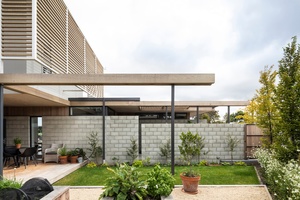
On the east side is the ‘morning terrace’ flanked by the kitchen, study, entrance and a well-stocked veggie garden. To the north, is the main courtyard, accessed from the kitchen, day room, lounge and dining. The ‘afternoon deck’ is located on the western side of the home and can be reached via the dining, lounge and main bedroom.
A double garage, laundry and several storage areas are also located on the ground floor.
The upper level features two guest bedrooms, a play area for the grandchildren and the family bathroom. It was important for the upper level to be not too dominating for the ground floor of the house as well as the neighbouring houses, designed with this in mind to appear as a ‘floating pavilion’ with its light colour and cedar sunscreens within a skeletal steel structure.
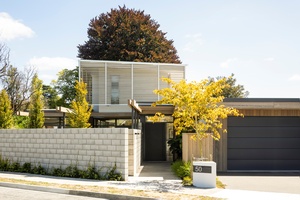
Cedar screens and pergolas on all sides of the house were introduced, providing additional shade and creating visual continuity between the indoor and outdoor living areas. Ultimately the house is designed to be a relaxed and easy place to live year-round so that the homeowners feel as if they are always on holiday.
To address the client’s wish for an environmentally friendly home, Borrmeister Architects incorporated passive and eco-friendly power, water, heating and cooling technology including solar/photovoltaic panels, high levels of insulation, thermally broken window and door joinery with high-performance glass, cedar pergolas, cedar fixed and sliding screens, low maintenance materials, calculated roof overhangs designed to follow the daily sun path, rainwater retention tanks for garden irrigation as well as space for a well-stocked veggie garden and numerous fruit trees.
Four Winds
Four Winds was rebuilt on the client’s existing site, situated on an enviable corner site within walking distance to Sumner Beach, Christchurch. The decision was made to remove the client’s existing family dwelling — which required considerable remediation to convert into a healthy home — to accommodate the new 240sqm house.
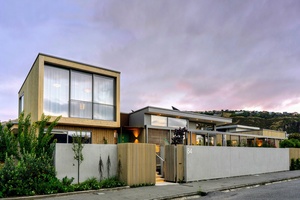
The rectangular site runs east-west and the house follows this orientation with the advantage of enjoying all day northern sun; the design utilising clever roof overhangs and sliding screens to provide flexible sun control.
The house is orientated north with the majority of rooms facing all-day sun, supporting solar gain and natural cross ventilation with high-level windows and skylights. Shading from the sun and protection from the weather is provided by roof overhangs and sliding screens designed to respond to the daily sun path.
A seamless transition from inside-to-out was achieved for this beachside home by extending the architectural features of the house to provide shelter and frame views. An extensive colonnade accommodating timber sliding screens and a central courtyard with an outdoor fire, blur the boundary between house and landscape and passively work to provide home comfort for all.
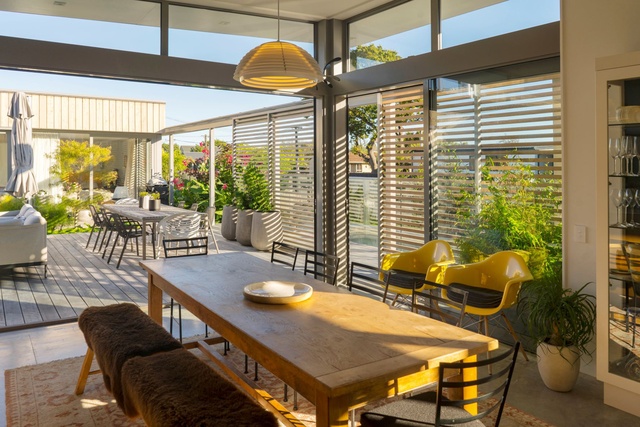
The choice of cladding is subtle and pared back with whitewashed macrocarpa, appropriately reminiscent of beachside driftwood, creating a relaxing and calming beachside atmosphere.
The client’s brief required that their lifestyle transition with having their grown children move out of home and visit periodically was catered to. Hence, flexibility and privacy were prioritised within the layout of the home, with separate wings for the main and secondary sleeping areas on opposite ends of the house.
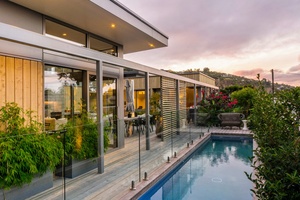
To achieve the desired level of flexibility and privacy in the sleeping areas, the secondary first-floor bedrooms are able to be closed off when not in use.
Solar panels and efficient heating via heat pump and hot water in-slab heating in the main living area, function as a thermal mass to keep the house well heated. Fruit trees and vegetable gardens were part of the design from the outset and were driven by both architects and the client as an essential component for both lifestyle and future-proofing.
About Borrmeister Architects:
Borrmeister Architects strive to create architecture that integrates into the natural world thoughtfully and respectfully to achieve positive experiences and healthy environments both for their clients and future users. Every design project they are involved in has an emphasis on environmental awareness and a commitment to creating environmentally friendly, energy-efficient buildings that use natural and sustainable materials. Their studio team is also active within the community, partnering with Council and local community groups for planting and maintenance of public spaces. Find out more on their website.

